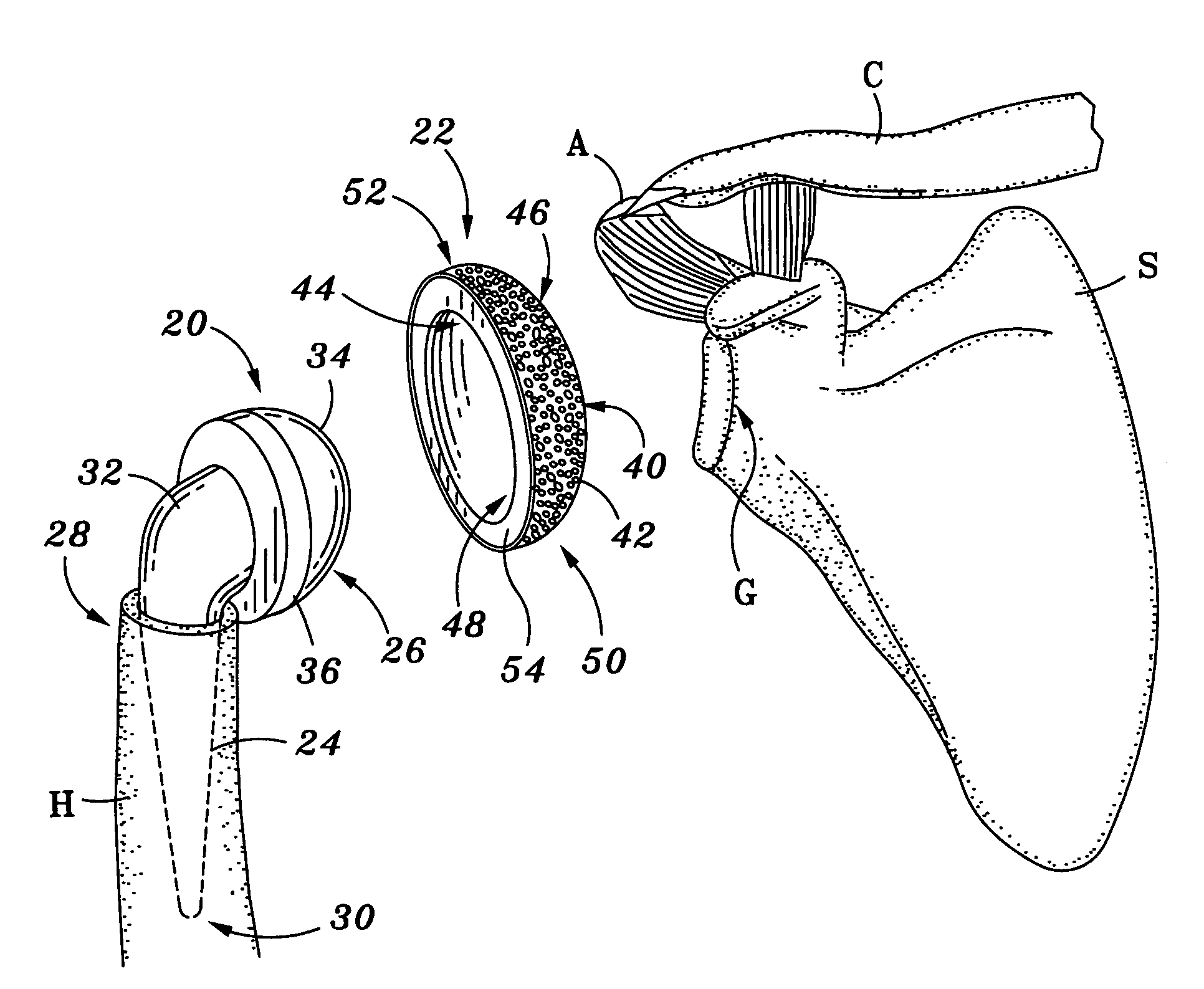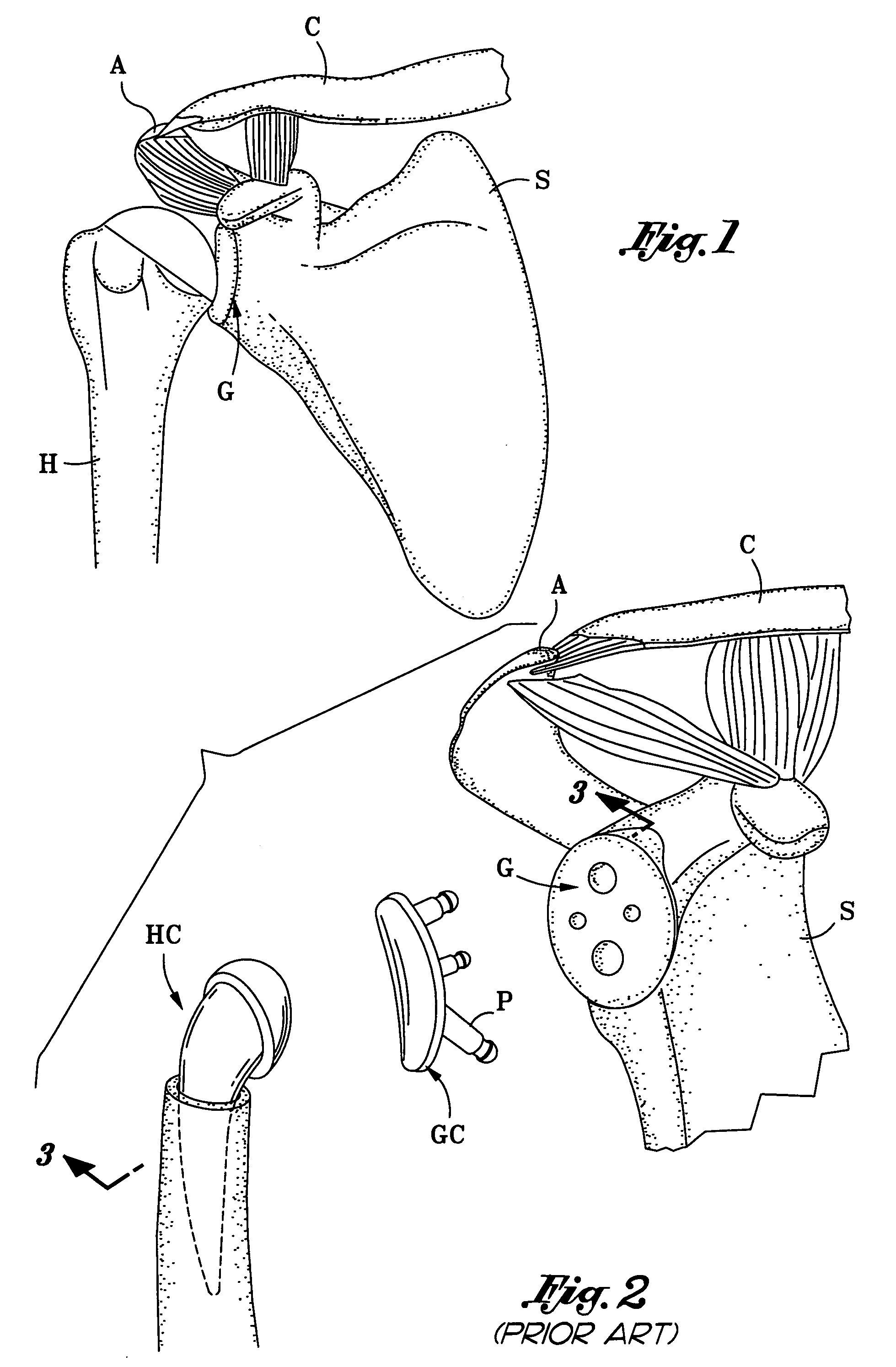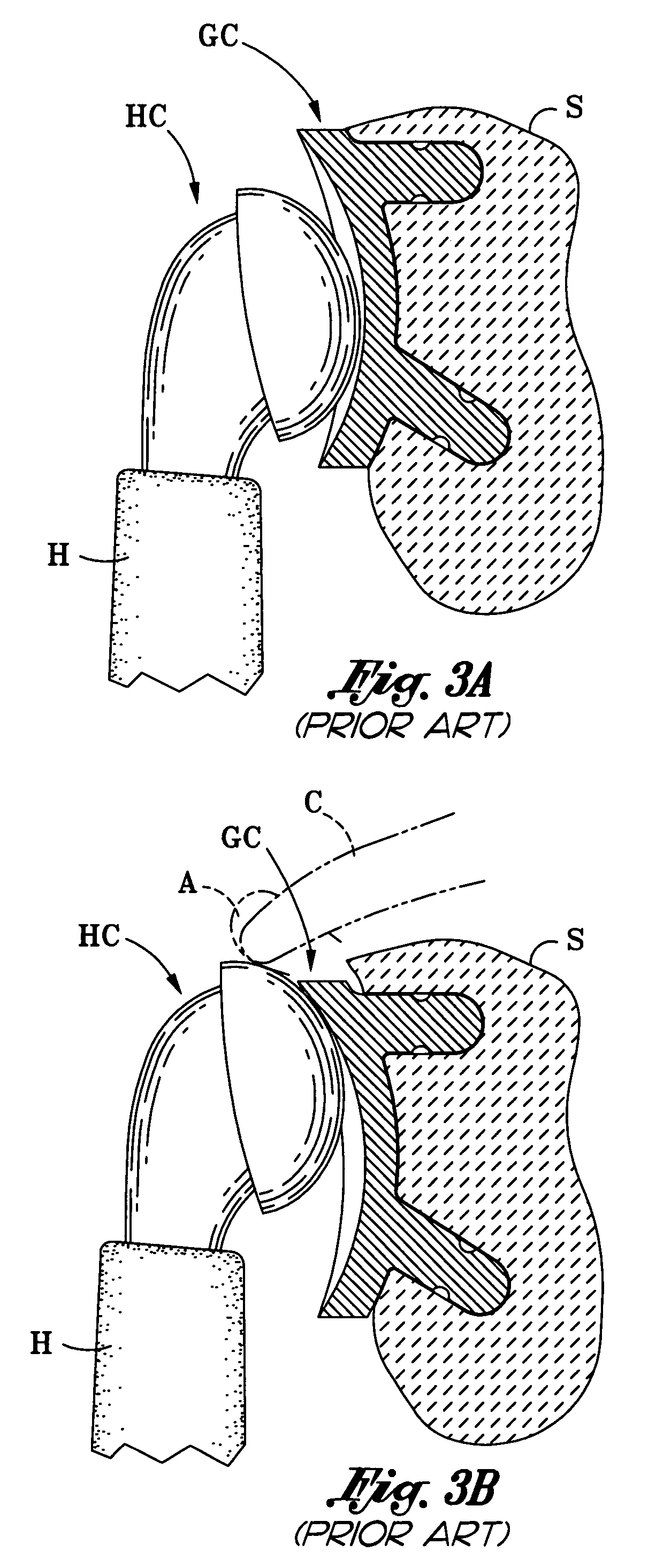Method and apparatus for shoulder arthroplasty
a shoulder and arthroplasty technology, applied in the field of shoulder replacement or arthroplasty, can solve the problems of damage to the acromion and/or clavicle, the rotator cuff no longer effectively serves to maintain the proper position of the humeral head, and the components and typical methods of shoulder arthroplasty are very often not effective, so as to promote the longevity of the implant, improve the external support of the component, and ensure the effect of glenoid
- Summary
- Abstract
- Description
- Claims
- Application Information
AI Technical Summary
Benefits of technology
Problems solved by technology
Method used
Image
Examples
Embodiment Construction
[0028]The invention is a method of total shoulder arthroplasty and shoulder arthroplasty prosthesis. In the following description, numerous specific details are set forth in order to provide a more thorough description of the present invention. It will be apparent, however, to one skilled in the art, that the present invention may be practiced without these specific details. In other instances, well-known features have not been described in detail so as not to obscure the invention.
[0029]In general, the invention comprises a shoulder prosthesis, including individual components of the prosthesis, and a method of performing a total shoulder arthroplasty. The components and method are particularly effective in the event shoulder arthroplasty is necessitated or includes a condition of loss of rotator cuff function and rotator cuff arthropathy.
[0030]FIG. 4 illustrates one embodiment of a humeral component 20 and a glenoid component 22 of a shoulder prosthesis in accordance with the inven...
PUM
| Property | Measurement | Unit |
|---|---|---|
| depth | aaaaa | aaaaa |
| area | aaaaa | aaaaa |
| movement | aaaaa | aaaaa |
Abstract
Description
Claims
Application Information
 Login to View More
Login to View More - R&D
- Intellectual Property
- Life Sciences
- Materials
- Tech Scout
- Unparalleled Data Quality
- Higher Quality Content
- 60% Fewer Hallucinations
Browse by: Latest US Patents, China's latest patents, Technical Efficacy Thesaurus, Application Domain, Technology Topic, Popular Technical Reports.
© 2025 PatSnap. All rights reserved.Legal|Privacy policy|Modern Slavery Act Transparency Statement|Sitemap|About US| Contact US: help@patsnap.com



